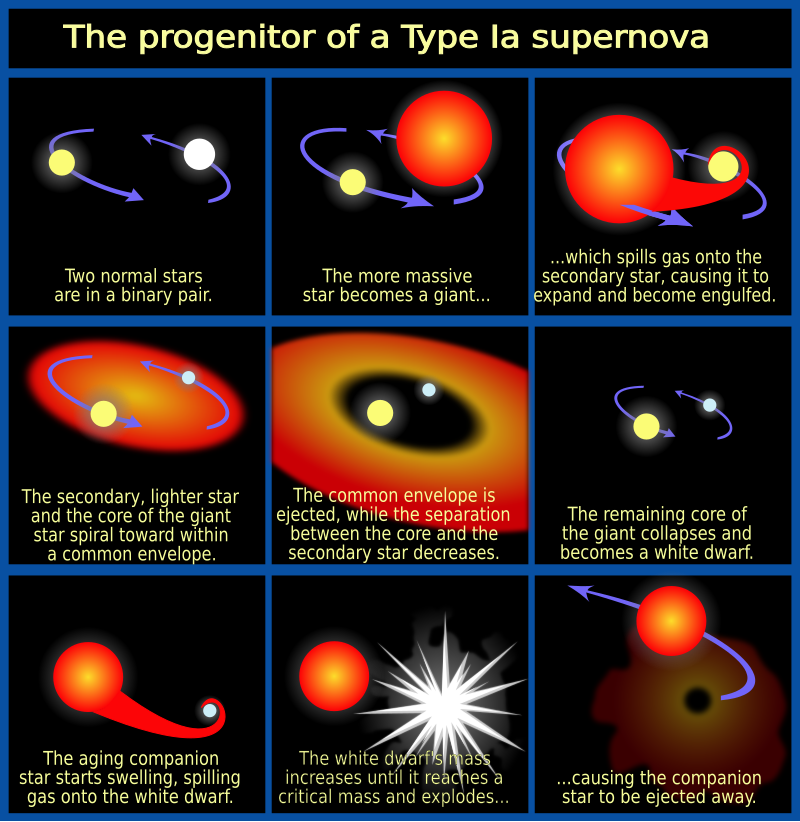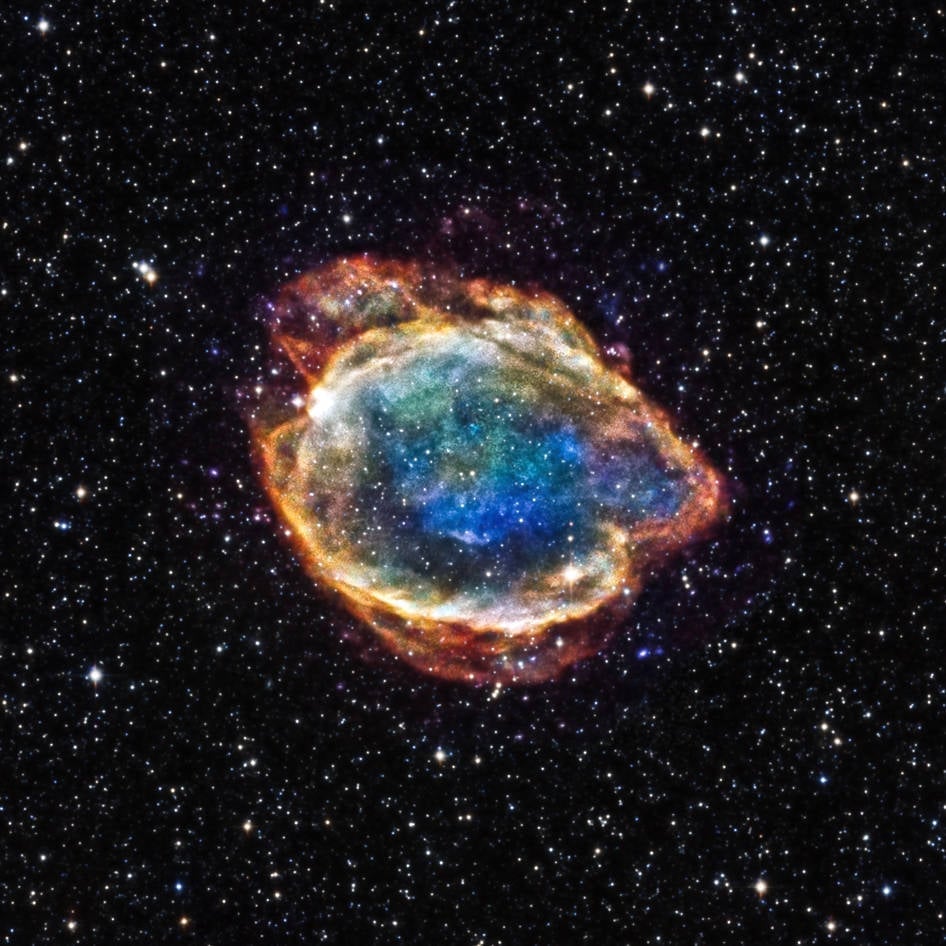Imagine you’re watching a balloon inflate, but instead of slowing down as it gets bigger, it keeps expanding faster and faster. That’s essentially what scientists discovered about our universe in 1998 using exploding stars called supernovae. They found that some unknown force, which was subsequently named “dark energy” was pushing space itself apart at an accelerating rate. Now, after analyzing over 2,000 of these stellar explosions, researchers have found hints that dark energy might not be as constant as we thought. It may actually be changing, and possibly weakening over time.
A supernova was captured in the Pinwheel Galaxy in 2011 and named SN2011fe (Credit : Thunderf00t)
Type Ia supernovae are incredibly bright explosions that occur when a specific type of dead star, called a white dwarf, accumulates too much material and explodes. They’re so bright that they can be seen across billions of light years, and crucially, they all shine with roughly the same brightness.
This predictability of the brightness makes them perfect “standard candles” for measuring distances in space. Just like you could estimate how far away a streetlight is based on how bright it appears, astronomers can calculate how far these supernovae are from Earth. But here’s the key, by also measuring how much the light from these explosions has been stretched or redshifted by the expansion of space, it’s possible to figure out how fast the universe was expanding at different times in the past.
Since that Nobel Prize winning discovery in 1998, astronomers have spotted more than 2,000 Type Ia supernovae using different telescopes and techniques. But there was a problem, comparing data from different sources was like trying to compare measurements taken with different rulers. Each telescope and survey had its own calibrations and differences.

Schematic of the Type 1a supernova process (Credit : NASA, ESA and A. Feild (STScI))
To solve this, an international team called the Supernova Cosmology Project spent years creating something called “Union3”, the largest standardised dataset of supernovae ever assembled. They painstakingly analysed 2,087 supernovae from 24 different datasets, adjusting for all the differences between telescopes and surveys to put everything on the same scale. When the team analysed this massive, standardised dataset using statistical methods, they found something intriguing. The data suggests that dark energy might not have stayed constant throughout history.
“Dark energy makes up almost 70% of the universe and is what drives the expansion, so if it is getting weaker, we would expect to see expansion slow over time” – David Rubin, the study’s lead author from the University of Hawaii.
This potential change in dark energy has huge implications for the ultimate fate of our universe. Currently, researchers work with a model called Lambda CDM, where dark energy (Lambda) stays constant over time and counteracts the gravitational pull of matter (cold dark matter, or CDM). But if dark energy is actually weakening then the model could play out very differently. If dark energy wins over gravity, the universe continues expanding forever, potentially leading to a “Big Rip” where space expands so fast that even atoms get torn apart. If gravity wins, the expansion could slow down, stop, or even reverse into a “Big Crunch” where everything collapses back together. If they balance, the universe might reach a steady state.
What makes this discovery particularly exciting is that it’s not coming from just one source. A separate study called the Dark Energy Spectroscopic Instrument (DESI), which studies how galaxies cluster together, is seeing similar hints that dark energy might be evolving.
The researchers aren’t ready to definitively declare that dark energy is changing—the evidence, while intriguing, isn’t quite strong enough yet. Over the next year, they plan to add several hundred more supernovae to their dataset, which should provide even more precise measurements. Looking further ahead, new telescopes like the Vera C. Rubin Observatory and the Nancy Grace Roman Space Telescope are expected to discover tens of thousands of additional supernovae over the coming decade.
Source : Largest supernova dataset hints dark energy may be changing over time
